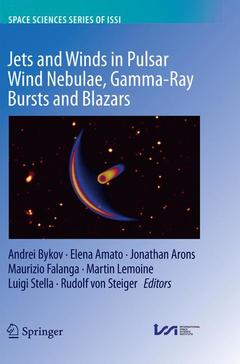Description
Jets and Winds in Pulsar Wind Nebulae, Gamma-Ray Bursts and Blazars, Softcover reprint of the original 1st ed. 2018
Space Sciences Series of ISSI Series, Vol. 62
Coordinators: Bykov Andrei, Amato Elena, Arons Jonathan, Falanga Maurizio, Lemoine Martin, Stella Luigi, von Steiger Rudolf
Language: English
Subjects for Jets and Winds in Pulsar Wind Nebulae, Gamma-Ray Bursts...:
Publication date: 01-2019
Support: Print on demand
Publication date: 04-2018
Support: Print on demand
Description
/li>Contents
/li>Biography
/li>Comment
/li>
Editorial: Topical Collection on Jets and Winds in Pulsar Wind Nebulae, Gamma-Ray Bursts and Blazars.- Relativistic Jets in Active Galactic Nuclei and Microquasars.- Gamma-Ray Bursts and Fast Transients.- Photospheric Emission of Gamma-Ray Bursts.- Electrodynamics of Pulsar Magnetosphere.- Modelling Jets, Tori and Flares in Pulsar Wind Nebulae.- Pulsar-Wind Nebulae and Magnetar Outflows: Observations at Radio, X-Ray, and Gamma-Ray Wavelengths.- Pulsar Wind Nebulae with Bow Shocks: Non-thermal Radiation and Cosmic Ray Leptons.- Magnetoluminescence.- Towards Understanding the Physics of Collisionless Relativistic Shocks.
Provides a timely review of relativistic astrophysical outflows
Offers 10 peer-reviewed articles written by leaders in the fields
Forms a useful resource for postgraduate students and researchers in various areas of astrophysics and space science




